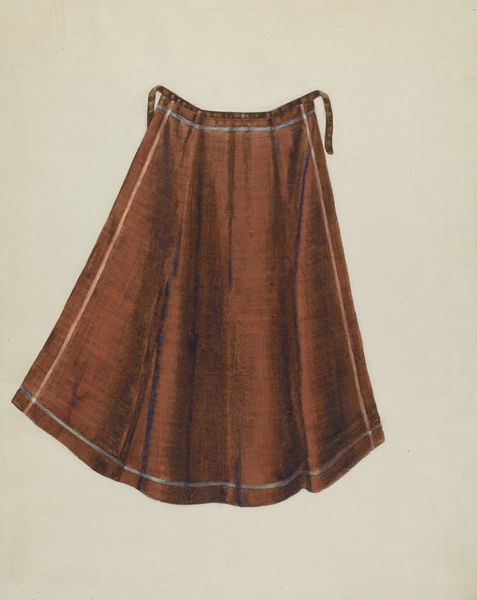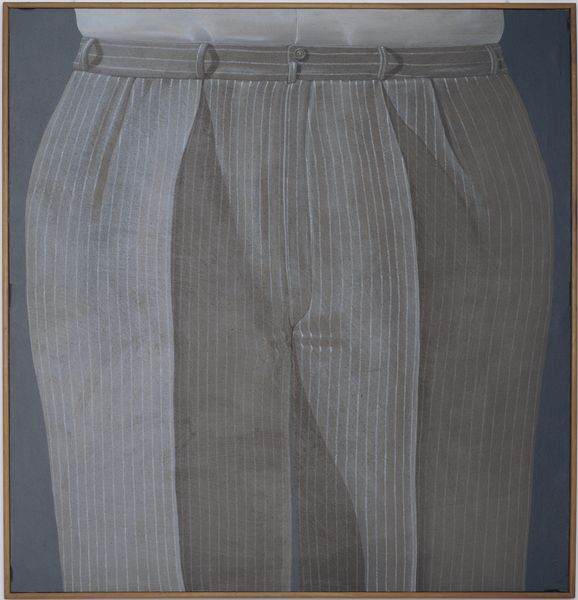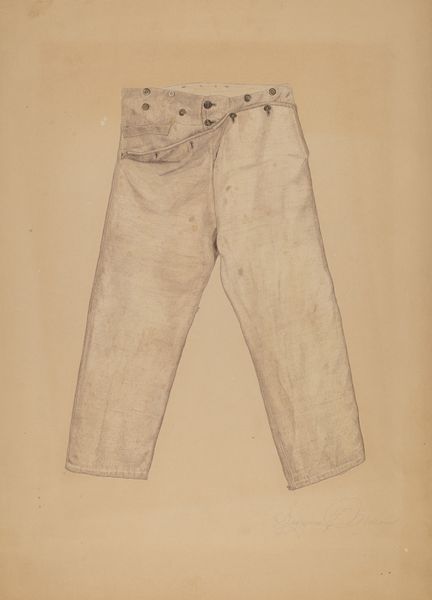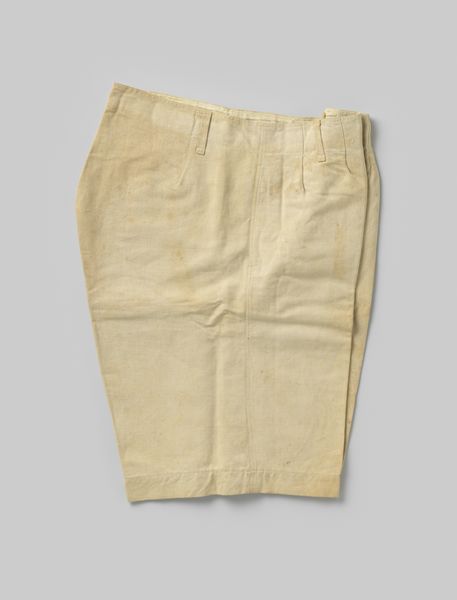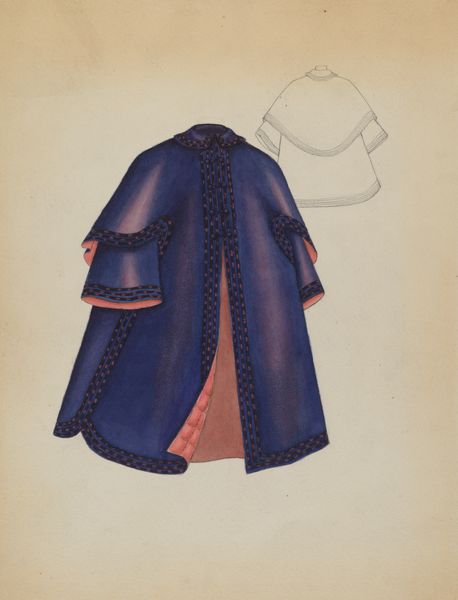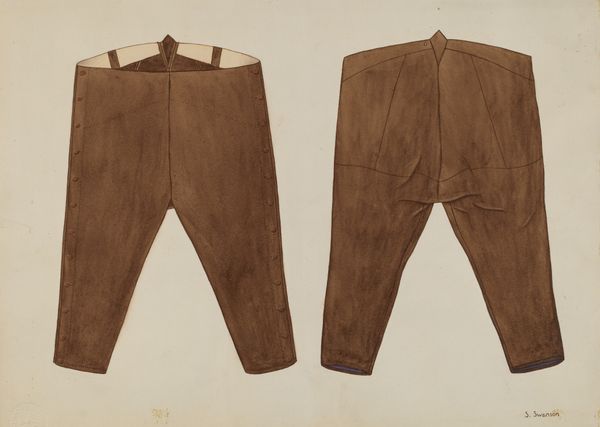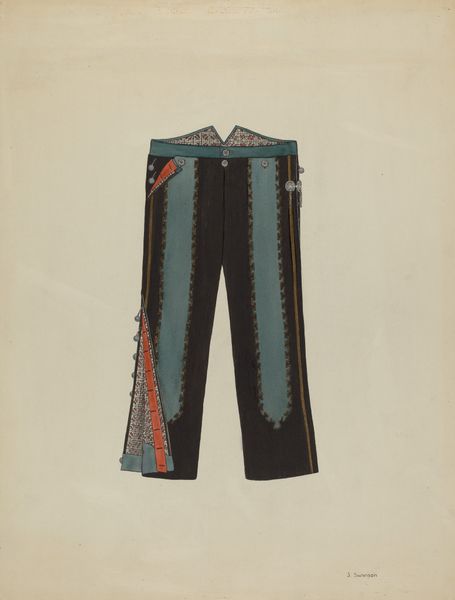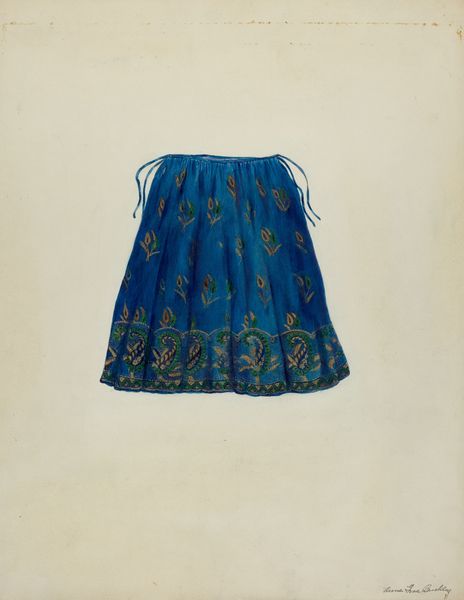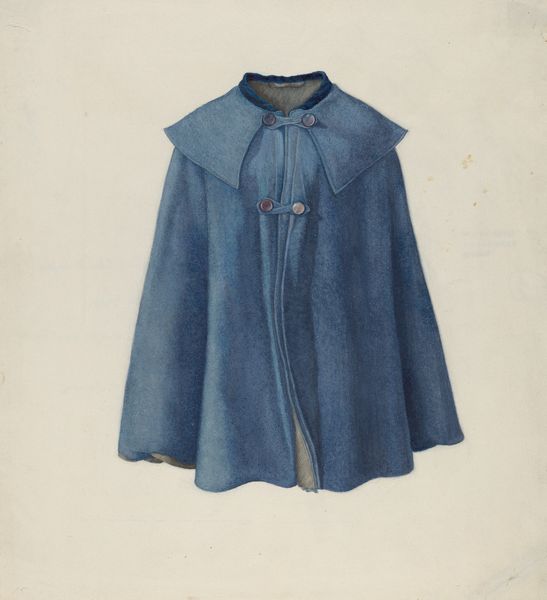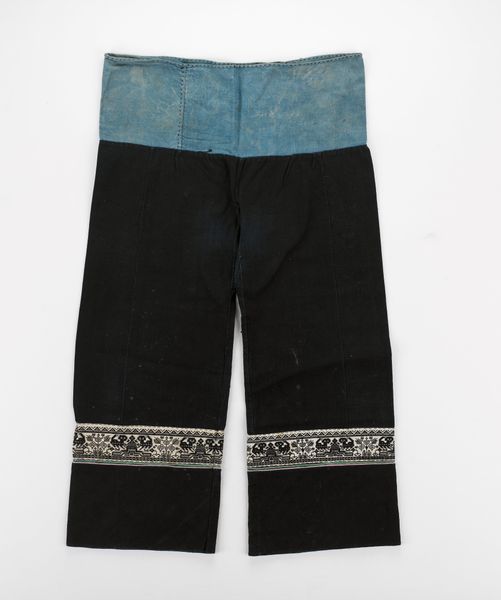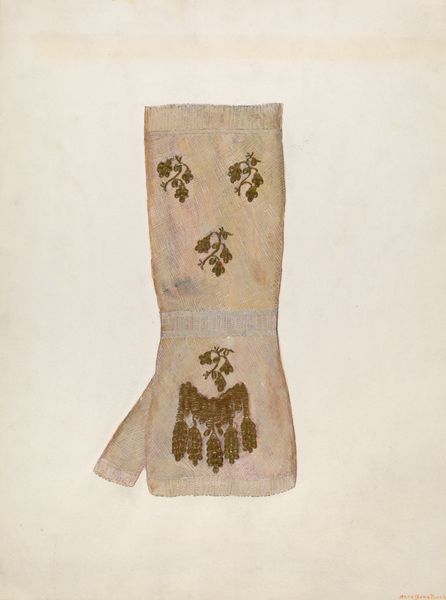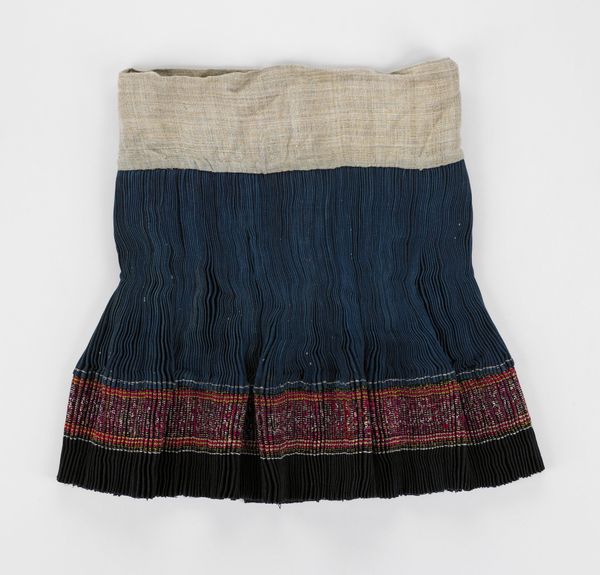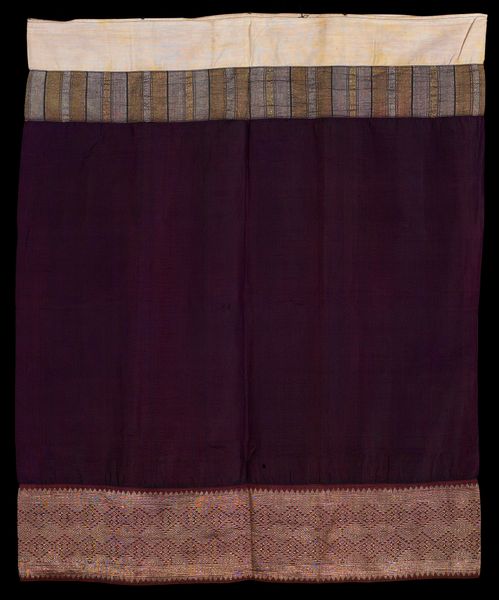
drawing, coloured-pencil, pencil
#
drawing
#
coloured-pencil
#
figuration
#
pencil
#
academic-art
#
realism
Dimensions: overall: 29.3 x 24.1 cm (11 9/16 x 9 1/2 in.)
Copyright: National Gallery of Art: CC0 1.0
Editor: We're looking at "Man's Apron," a colored pencil and pencil drawing from Ingrid Selmer-Larsen, dating between 1935 and 1942. I'm struck by how utilitarian it seems; even in a drawing, it feels like an object made for labor. What stands out to you about it? Curator: What's interesting to me is considering this apron not just as a representation of labor, but as a material object itself, translated through the mediums of pencil and colored pencil. How does Selmer-Larsen’s choice of such common materials, elevate the everyday object of a man’s apron? Editor: I hadn't thought about it that way. So you're saying the materials used in the artwork itself are commenting on the value or the perceived lack of value, of manual labor? Curator: Precisely. Notice how the textures are rendered with such care, mimicking the fabric and the weight. During this time period, artists were engaging with ideas about craft versus fine art, often through accessible and readily available means of production, like pencil drawings of commonplace objects. Consider the apron as a social marker, indicative of the wearer's class and occupation, rendered through inexpensive art supplies. What does that signify? Editor: That it's about bringing dignity and visibility to something overlooked, democratizing art by representing the worker? But also, doesn't drawing an apron still remove it from its original function? Curator: Good point! It does exist now as an image, rather than a practical item, forcing us to reconsider its original purpose and now viewing labor with art supplies that were more readily available to a wider audience. The act of drawing becomes a form of labor itself, reflecting the process of creation involved in making both the apron and the artwork. Editor: That makes so much sense! So it is also questioning traditional art making while portraying a utilitarian garment! Thank you! Curator: Exactly! It provides insight on the process behind how everyday life became not just subject matter for art, but material of it, as well.
Comments
No comments
Be the first to comment and join the conversation on the ultimate creative platform.
